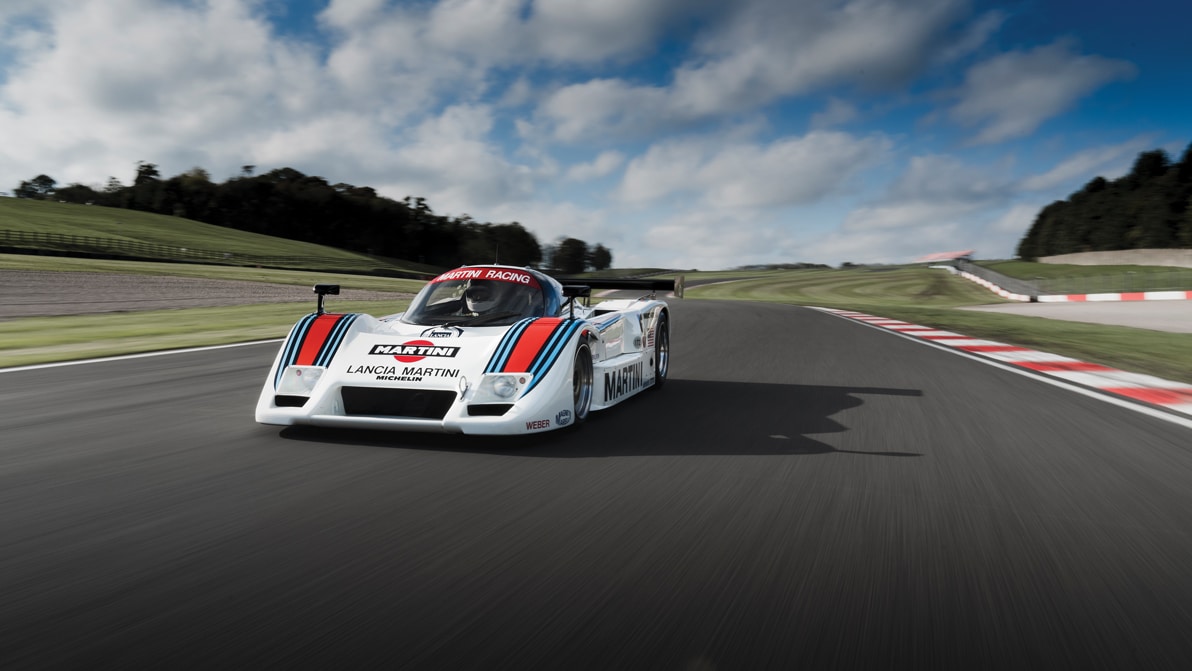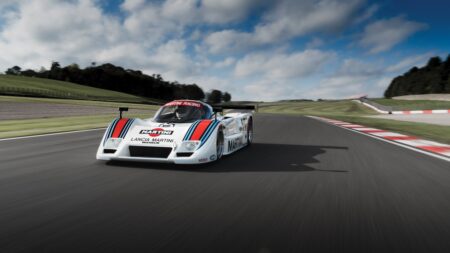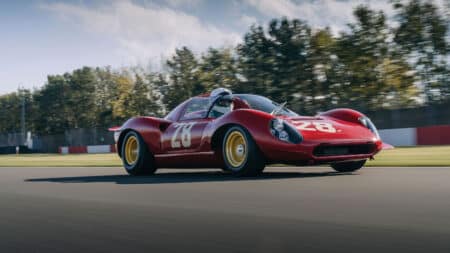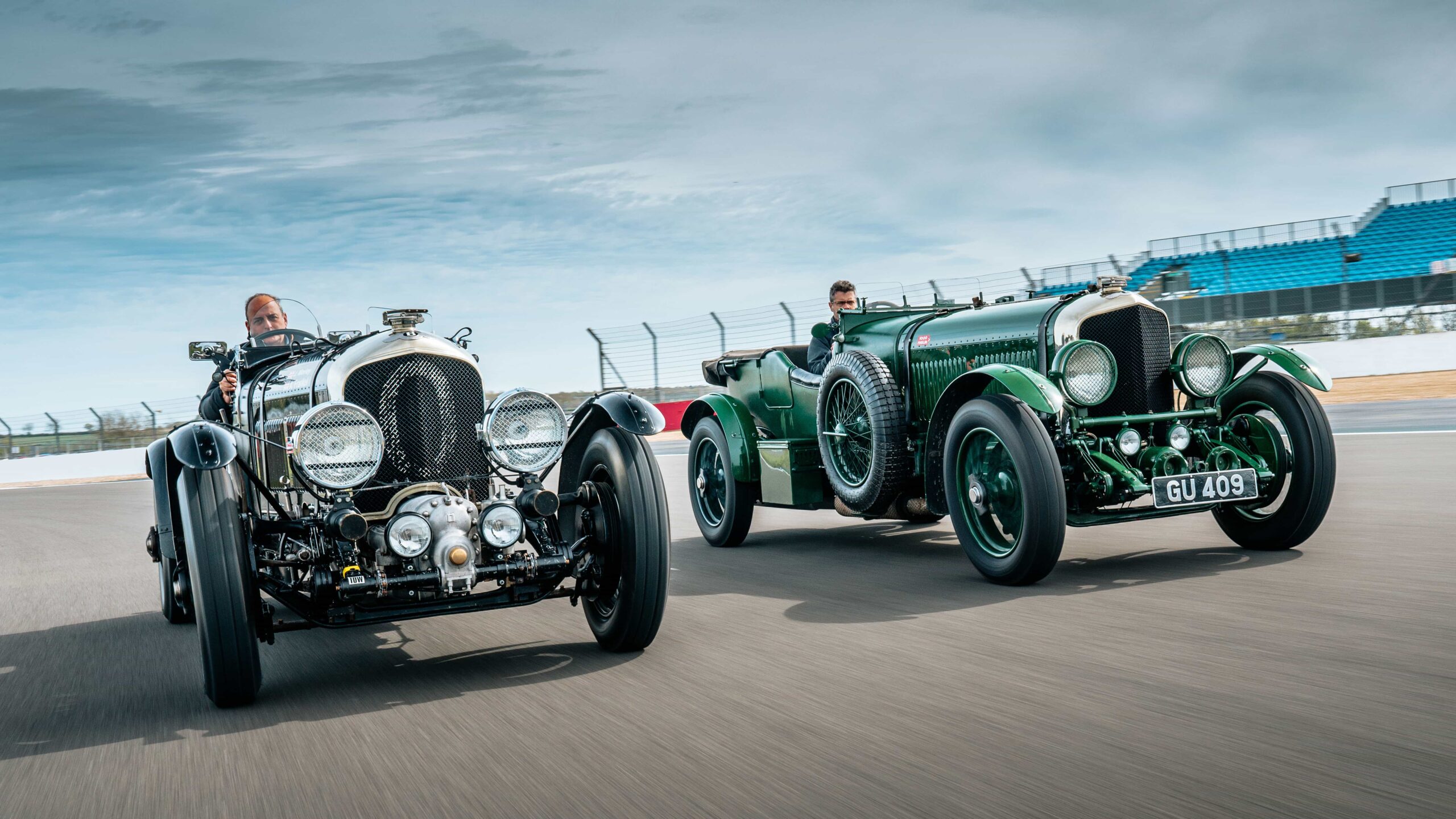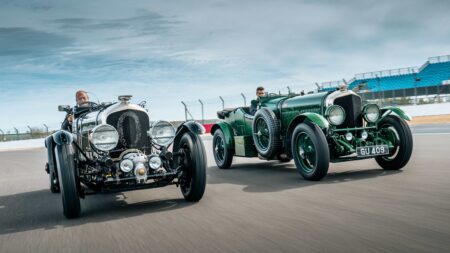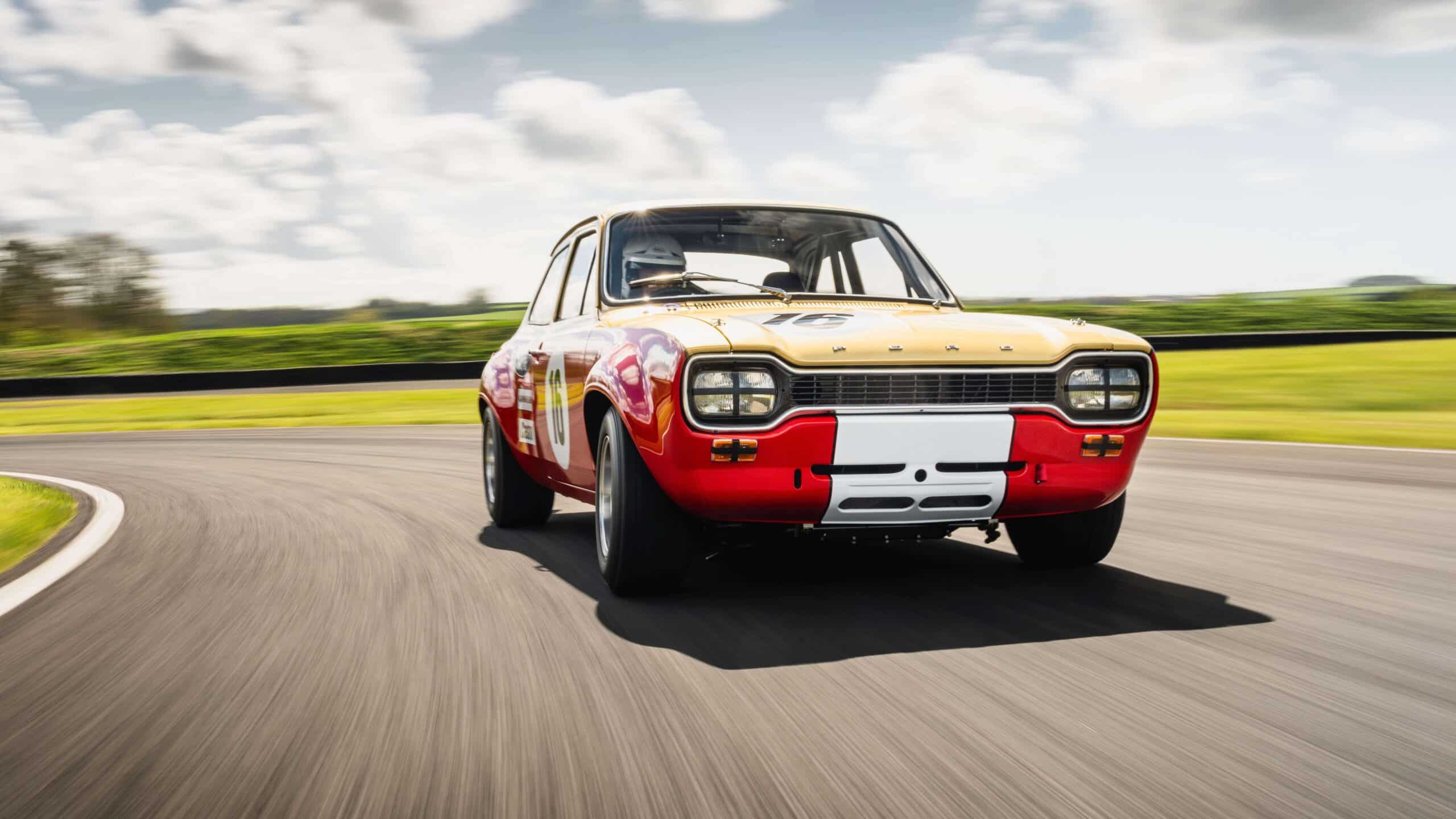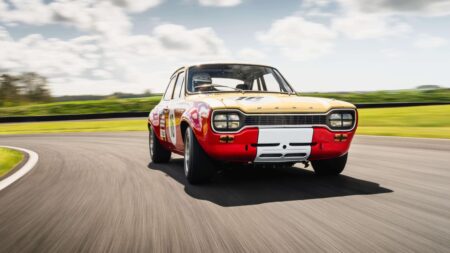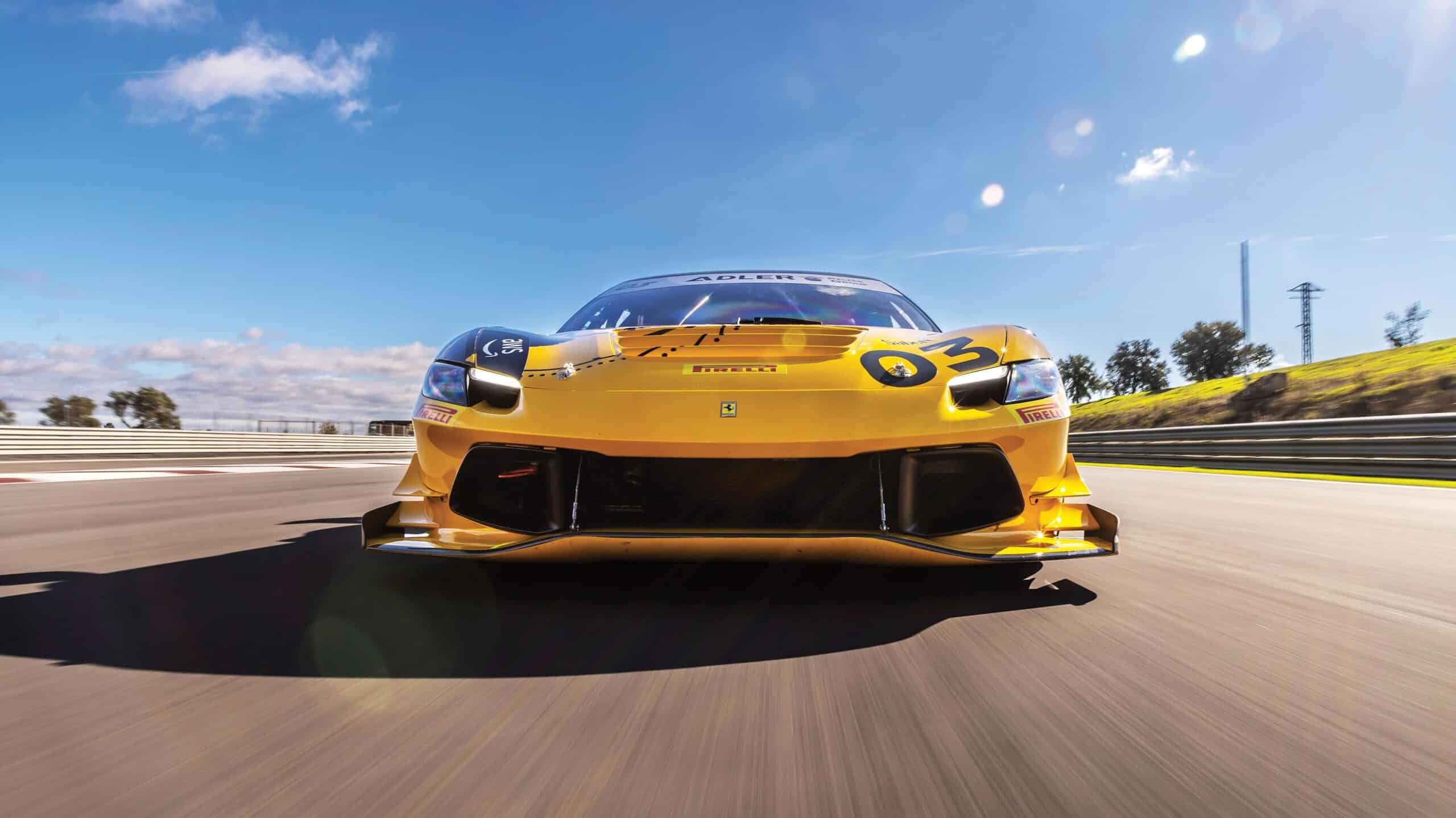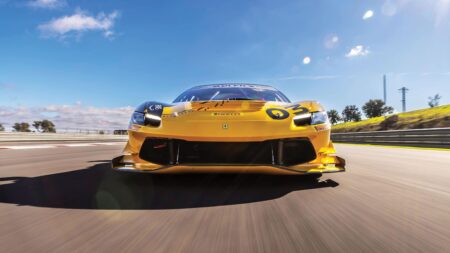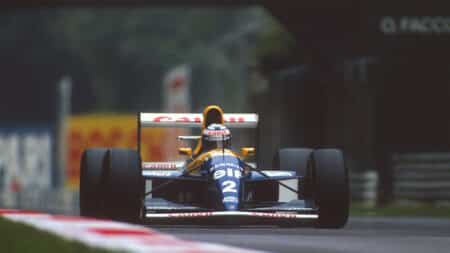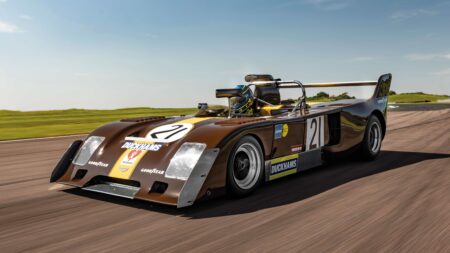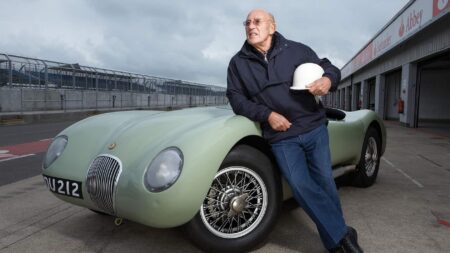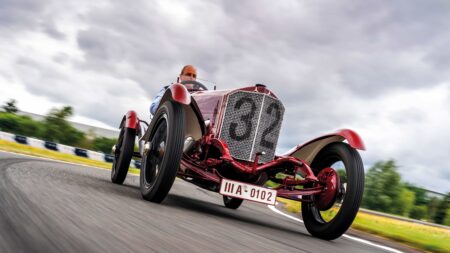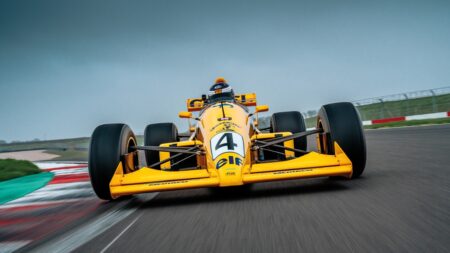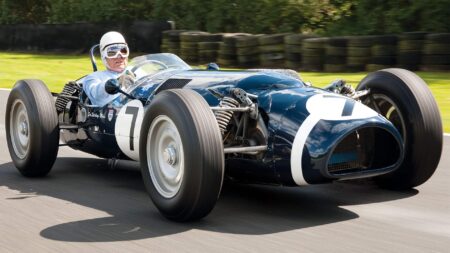“Well this was going to be a first. I’ve been track testing cars for this title for 28 years and can recall just one occasion on which I have left the circuit without intending to, and that was in 1998 when I had a harmless semi-spin in the 1988 Le Mans-winning Jaguar XJR-9LM while exiting the Ford Chicane at that very track.
“But never have I failed to make it through the first corner before.
“But now as the Lancia LC2 point blank refused to turn into Redgate approximately 5sec after I’d departed the pitlane for the very first time, I could see no other outcome…”
On track in the Dino 206 S: Ferrari’s near-perfect pocket racer
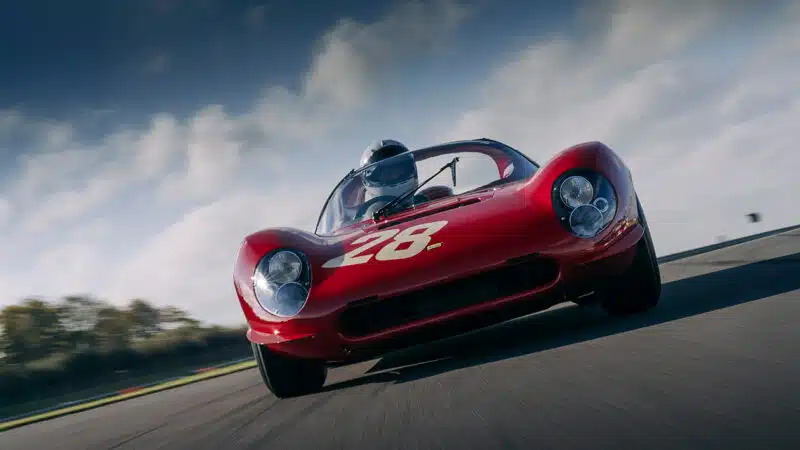
Motor Sport gets behind the wheel
Dean Smith
A small package but the handsome Ferrari 206 S has just enough room for Andrew Frankel, who is about to experience near-perfection

